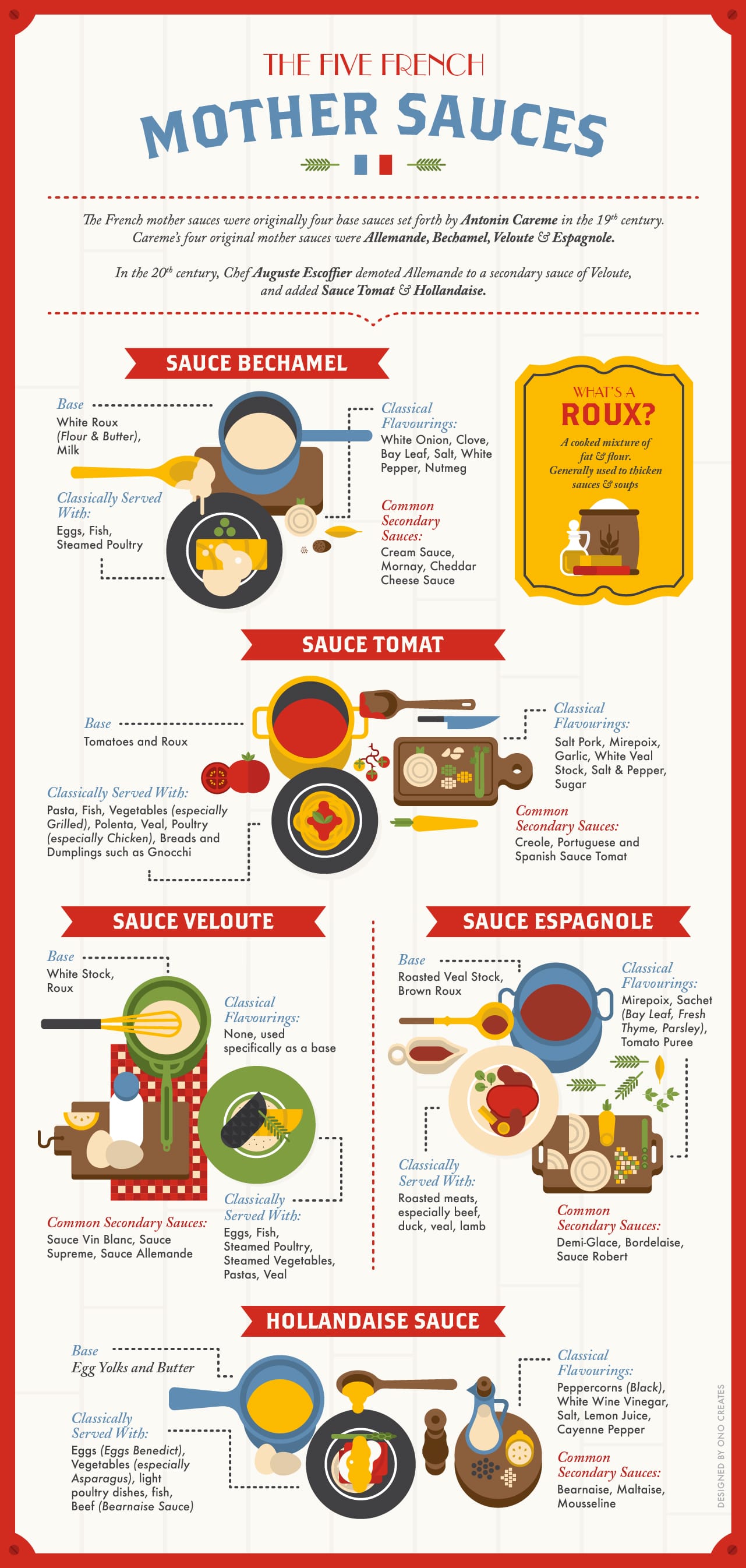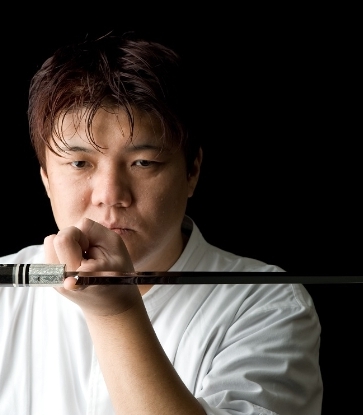White Sauces
This base sauce is essential in many other classic sauces such as crème sauce, mustard sauce and many cheese sauces such as Mornay. Produced by combining a white roux of butter and flour with heated milk, it is commonly served with white meats, and used as a foundation in many gravies and soups, as well as popular dishes ranging from lasagne, other pastas and pizzas to comfort foods like scalloped potatoes and casseroles.

Most notable for its role in the popular breakfast dish of eggs Benedict, hollandaise sauce incorporates lemon juice and clarified butter (butter stripped of its milk solids) into egg yolks through whisking at low temperatures. As with the other French mother sauces, it acts as the model for many other sauce recipes, including sauce Béarnise and several other French sauces. Possibly the most versatile of the sauces on this list, a good dollop of hollandaise sauce can be paired with most common items, ranging from eggs to both red and white meats, and even vegetables or baked potatoes.

Velouté is the last of the white mother sauces, though it is by no means the least. It is formed by thickening a light stock, usually made from chicken, fish or veal, with a white roux once more. While essentially the least complex to make out of the mother sauces, the sheer number of derivative sauces from this base, with sauce allemande (originally also a mother sauce under the original 19th century categorization), sauce vin blanc (white wine sauce) and sauce suprême among them, make sauce velouté one of the most important in both classical and modern French cuisine.

Brown Sauces
The most basic of brown sauces and the heaviest of the mother sauces, sauce espagnole is made by reducing a broth consisting of a brown roux (made by cooking clarified butter with flour for a longer duration instead of regular whole butter), veal or beef stock, browned bones, pieces of red meat and vegetables. During the cooking process, the connective tissues in the bones and meat are slowly dissolved to form a natural gelatinous thickening agent.

The French variation of a tomato sauce, sauce tomat is prepared by combining rendered pork fat from salt pork belly with a blend of carrots, onions, and tomatoes, a roux and veal (or alternative meat) stock, simmered in a medium-heat oven for two hours. The plethora of ingredients utilised results in the formation of an incredibly tasty sauce that is usually merged with other ingredients to form a range of other condiments including Creole, Spanish and Portuguese sauces.

The 5 French Mother Sauces Explained
















_THUMB_363_X_484.JPG)


